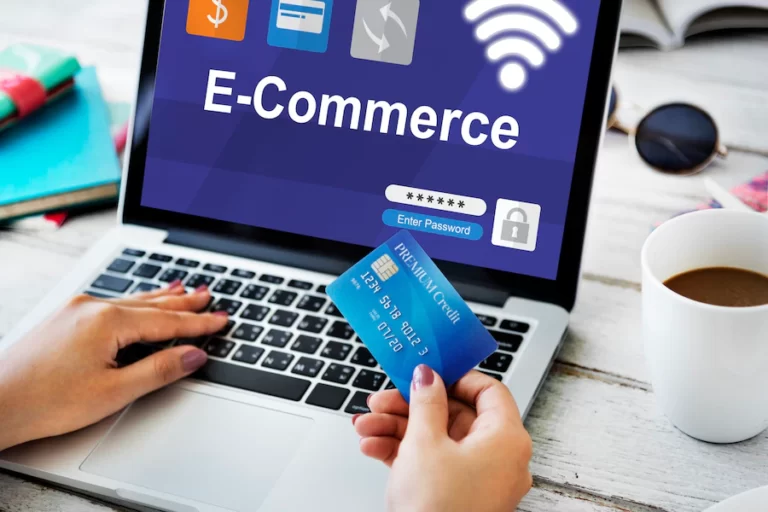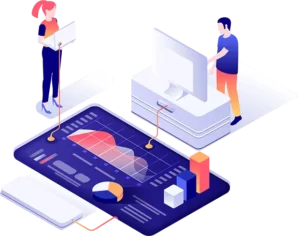E-commerce, also known as electronic commerce or Internet commerce, is the process of buying and selling products through electronic means, such as mobile applications and the Internet. It is usually used to refer to the sale of physical products online, but also to any kind of commercial transfer that is made easier through the Internet.
E-commerce has become very popular in recent years, and in a way, it is replacing physical stores. And it is that unlike these, this new model allows you to buy and sell products worldwide at any time of the day and without the need to move from the place where you are.
Types of e-commerce:
1. Business to consumer(B2C):
These are the transactions that occur between businesses and consumers. In these cases, it is the companies that sell products or services through an online store to end users, that is, to consumers.
2. Business to business (B2B):
As its name implies, B2B electronic commerce refers to transactions carried out between two companies or businesses. This means that any company that has another as a client employs in this model. Examples include small business online accounting software, payroll processing companies, companies that help others advertise their products, events, or content, and more.
3. Consumer to business (C2B) :
This is consumer-to-business e-commerce and occurs when a consumer sells or receives monetary value from a certain business. A case like this is when a blog owner sells advertising space to a company or business.
4. Consumer-to-consumer (C2C) :
It is the type of electronic commerce that occurs when something is bought and sold between two consumers. C2C usually takes place in online marketplaces. An example of this type of e-commerce would be eBay since on this website an individual sells a product or service to another. It can also happen on other sites like Amazon and Etsy.
5. Government to business (G2B) :
These types of transactions occur when a business pays for goods, services, or government fees online. This occurs, for example, when a business pays taxes using the Internet.
6. Business to government (B2G) :
It is the reverse of the above. In this type of e-commerce, the government entity uses the Internet to purchase goods or services from a company. This case could occur when a regional or district municipality hires a web design company to update its website.
7. Consumer to government (G2C) :
It is the type of electronic commerce that connects consumers with the government, facilitating the transactions to be carried out between the two parties. It is used to pay traffic tickets, car registration renewals, taxes, etc.
Advantages of electronic commerce
- It has a low financial cost: You save on the cost of advertising and marketing, hiring staff, renting premises, and payments for some services, among others.
- It gives you great income: It is proven that the effectiveness of a good online store exponentially increases the income of a company or business. This is because consumers have become accustomed to making purchases online as payment procedures are increasingly diverse and secure.
- Time savings: Your customers do not have to spend time on unnecessary trips and spend much of their time making their purchases, so this online shopping option is attractive to them.
- You generate sales anywhere in the world: Another advantage of e-commerce is that a new brand can easily sell to customers from all over the world. It has the ability to discover a new audience in America as well as in Europe, Asia, and Africa.
- You get new customers with search engine visibility: Online retail is also driven by search engine traffic.
- You provide extended information about what your business offers: There are limitations on the amount of information that can be displayed in a physical store. This, however, does not happen in the online store, where thanks to the extra information you can provide, you can convince your customer to buy what you offer.
- You make a faster sale of the services or products you offer: Your customers no longer need to search the entire store to purchase the product they want or form long queues to pay. This is simplified in online sales with a few clicks.
- Your business can be open 24 hours a day, 365 days a year: An e-commerce store allows you to attract those customers who may have inflexible work hours or who do not have time to shop in person.
- You can open analysis campaigns in a simple way: Through e-commerce, you can calculate and evaluate the effectiveness of sales, track customers, carry out marketing campaigns, and more.
*A fact about its origin*
Around noon on August 11, 1994, Phil Brandenberger of Philadelphia logged on to his computer and used his credit card to purchase "Ten Summoner's Tales" by musician Sting for $12.48 plus shipping. This moment is considered by many to be the first real e-commerce transaction.


